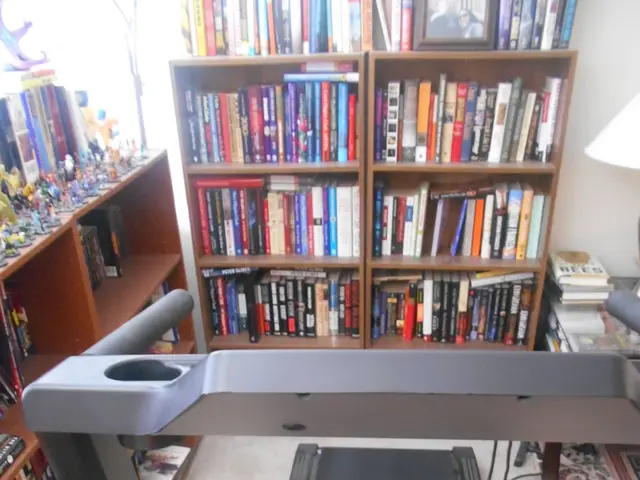House Plants of Tomorrow: Homes Grown Before Your Eyes?
Green Dreams: Could We Actually Grow Our Homes From Plants?
Let's dive into a captivating what-if scenario - what if we grew our homes from plants? No emissions, no concrete, no waste, no heat islands. Sounds amazing, right? Lucky for us, a project aiming in this direction is underway. But is it realistic, how far have they progressed, and what does the future hold for this eco-friendly vision? Let's take a peek inside the green future of Flora Robotica.
Flora Robotica is a cutting-edge fusion of technology and plant life. Sparked by the research field 'artificial life', the team pondered, "What could this really be good for?" And thus, Flora Robotica was born, blending science, nature preservation, and climate mitigation. The mastermind behind the innovative project is none other than Heiko Hamann, a computer scientist and professor at the University of Lübeck, Germany.
Plants Meets Tech: A Brief History
Flora Robotica kicked off in 2015, backed by a four-year grant from the European Union'sHorizon 2020 research and innovation program, totaling €3,641,781. The project's aim? To establish symbiotic relationships between robots and plants, investigating the potential of a plant-robot society capable of building architectural structures. But what does that even mean? Let's break it down.
Heiko explains that climbing plants adaptively move towards the light and explore their surroundings. By slightly influencing this behavior, could patterns and shapes be manipulated for building purposes? Could we construct homes out of plants? The idea was intriguing, so they set out to discover the answers.
The Vision Ahead
The Flora Robotica team started by making autonomous systems learn the growing patterns of plants. Their next step was to use blue light to influence plants to grow in desired ways. After mastering these skills, they aimed to create a small object, like a roof, and eventually, a house.
Building a plant-powered dream abode - now there's a grand vision! "It's something we might never achieve, but we can at least strive for progress," muses Heiko. The idea behind "growth career of a house" is simple: start with a typical building structure, let plants overgrow, replace materials, and reinforce the structure as new growth occurs.
Enter braided structures - this construction method offers the flexibility to replace materials while reinforcing existing structures, allowing for continuity of growth.
Materials, Costs, Maintenance, and More
At the beginning of the project, plant structures were made with plastic, due to its affordability and availability. However, as the project progressed, plastic didn't seem like the best long-term choice, so they switched to wood. In terms of expenses, take into account lighting and energy, equipment, materials, and plants. While this might not be the cheapest home on the market, initial costs would be offset with long-term savings due to the home's natural growth, CO2 absorption, and self-repairing features.
The Future's Green
Plant-based homes face inevitable challenges, such as durability and scalability, but the advantages are clear: sustainability, CO2 absorption, and the potential for them to be self-repairing. In fact, living root bridges in India's jungle are an excellent example of these features, as roots remain alive and continue to grow, making them sturdier than standard steel bridges.
Heiko couldn't emphasize enough the benefits of working in harmony with nature: "The adaptive behavior in plants offers us a living organism that adds material to our architecture over time virtually for free, taking CO2 from the air, and creating something solid. It's perfect."
Joining Forces for Success
Flora Robotica is no one-person operation; it takes a team of experts in various scientific fields to make this cross-disciplinary project a reality. Project partners hail from six different fields:
- Swarm Intelligence from the University of Lübeck, Germany
- Mechatronics from Cybertronica Research, Germany
- Plant Biology from the University in Poznan, Poland
- Centre for Information Technology and Architecture (CITA), Denmark
- Evolutionary Robotics from the IT University of Copenhagen, Denmark
- Artificial-Life Zoology from the Karl-Franzens-University of Graz, Austria
Despite their differences, these brilliant minds have formed a symbiotic team, embracing collaboration and breaking language barriers to achieve a common goal.
Lessons Learned
The Flora Robotica project is filled with valuable insights, and Heiko shares one significant lesson: "We were guided by the good practices of science, that experiments should be controlled; so, we did everything indoors. [However,] it might have been better to try moving outdoors, as plants grow towards blue, artificial light."
Despite this minor drawback, Flora Robotica has proven that combining technology with nature not only works but might just be the future of scientific research. By harnessing the best of both worlds, we can not only create structures more sustainably but also improve our planet for generations to come.
Flora Robotica may have officially concluded, but the spirit lives on through their successor project, WatchPlant, which uses plants as sensors to monitor air quality in cities.
The future of home construction looks mighty green. Let's root for roots!
- Heiko, the project's mastermind, envisions a future where homes are constructed by leveraging symbiotic relationships between robots and plants, a concept rooted in the realm of environmental science and climate mitigation.
- The fusion of technology and plant life, termed Flora Robotica, is not only an exploration of architectural structures but also a means of merging science, nature preservation, and smart-home devices within the context of sustainable living.
- As part of the Flora Robotica project, the team aims to create a house made primarily of plants to promote environmentally friendly, massive CO2 absorption, and self-repairing features, showcasing the potential of merging technology and the environment within our lifestyle.
- The future holds possibilities that blend home-and-garden gadgets with advanced technology, as plants grown in homes could potentially serve as sensors for air quality monitoring systems in cities, as demonstrated by Flora Robotica's successor project, WatchPlant.








